







A guide to Japandi design
Japandi design is a trend we have seen grow and develop over the last few years – and now it's bigger than ever.
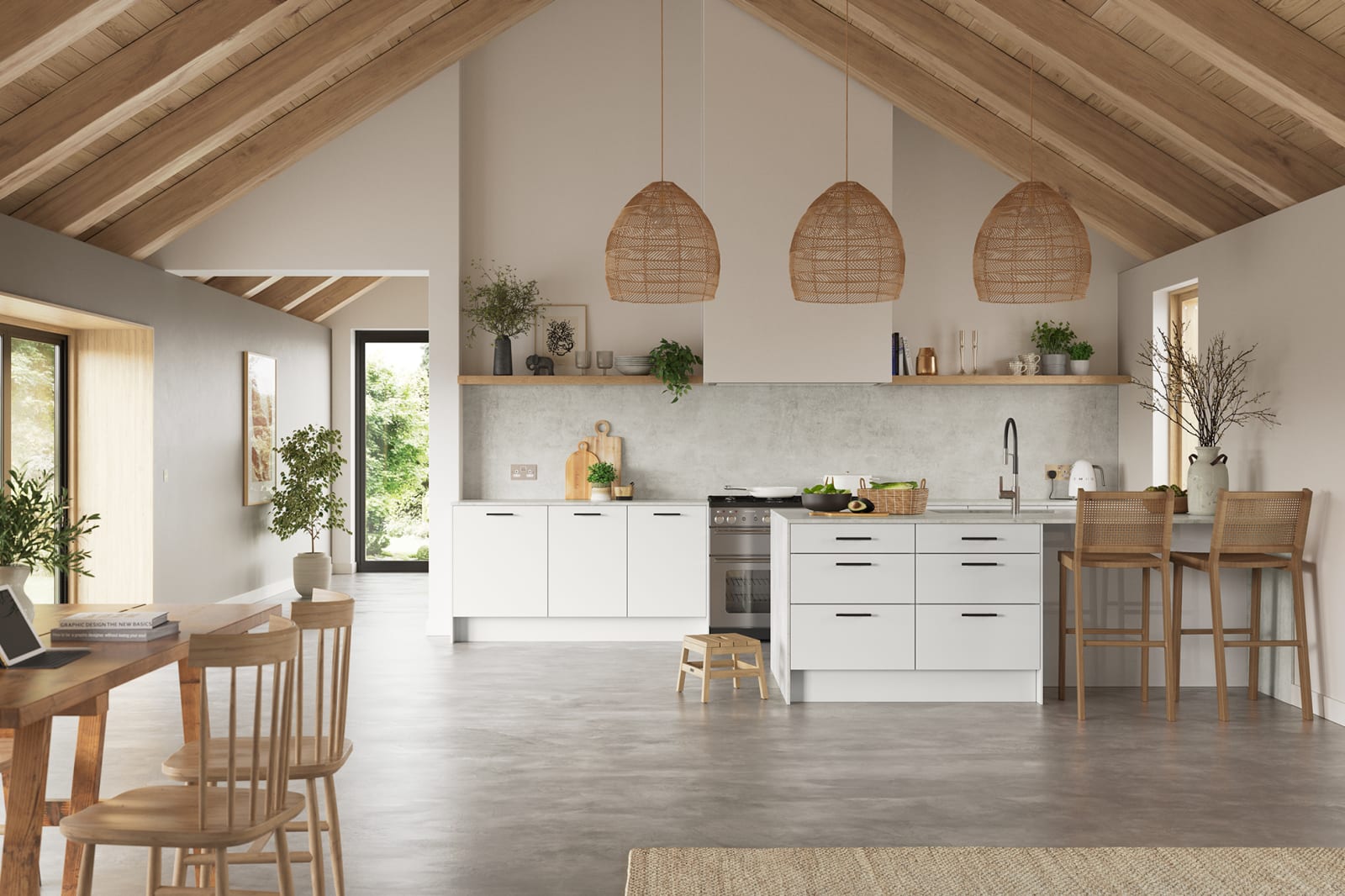
As the name suggests, Japandi denotes a balanced fusion of Japanese minimalism and Scandinavian style, creating a sleek yet comforting aesthetic that truly speaks to our ever-growing need for emotional wellness in the home.
Centred around bringing harmony and tranquillity into our interior spaces, Japandi takes on a less-is-more approach to living, with a zero-clutter stance. It's a style that prioritises sustainability and craftsmanship, where form and function go hand in hand.

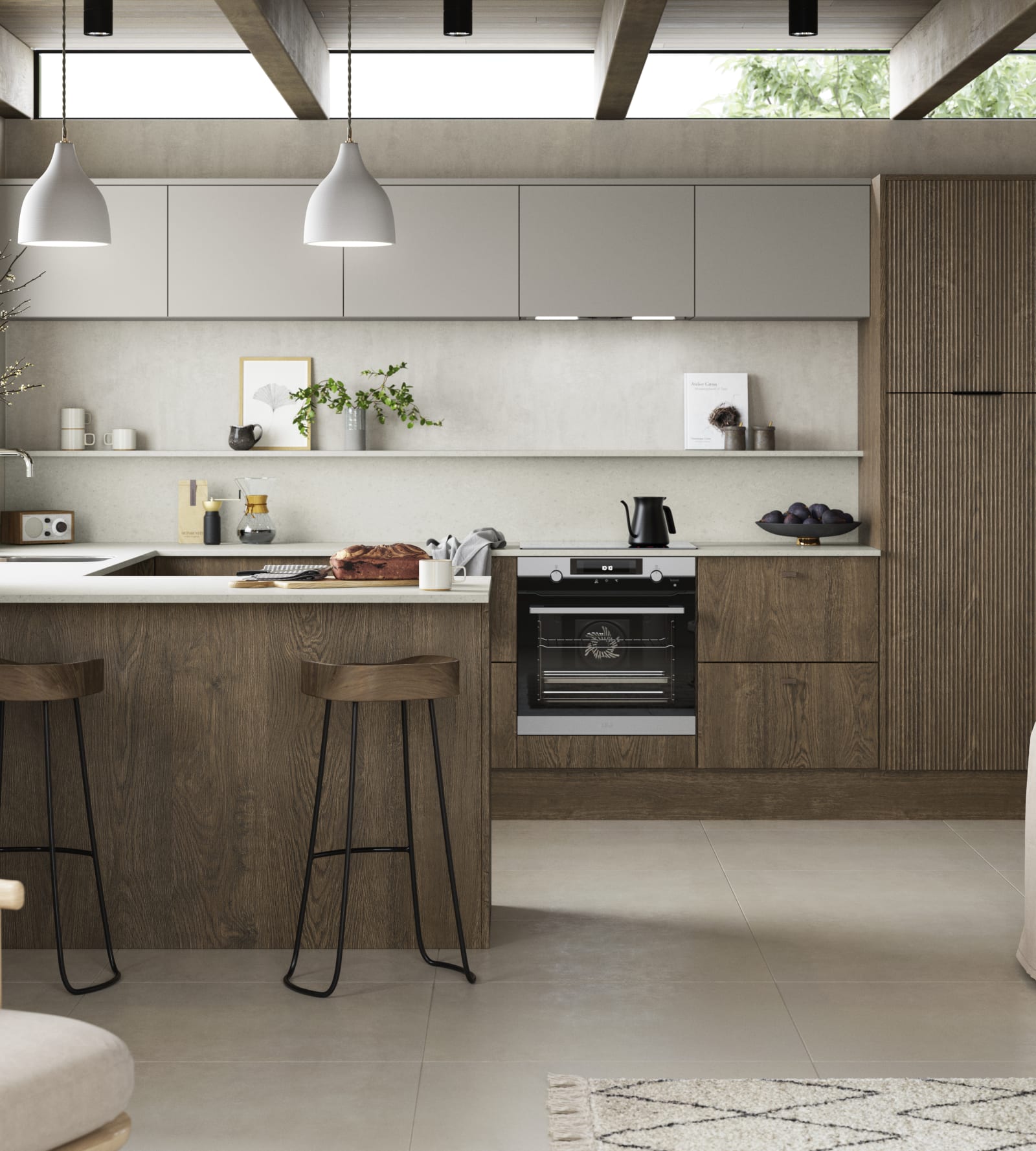
An introduction to the Japandi trend
Japandi interior design tends to favour simple, neutral palettes: think muted, calming colours, earthy tones and curated natural materials.
That being said, Japandi certainly doesn’t have to be bland or boring. Introducing understated greens, cool blues or dark woods can mix up the typical Japandi look to create something a little bit different.
Texture is everything in this trend. Use materials derived from nature for your furniture and surface finishes to give a calming 'outside-in' feel. Wood is the obvious choice here, but push the boundaries further with bamboo, rattan, stone, clay and even paper.
Opting for a limewash paint or a tadelakt plaster is another great way to add texture within a space, giving a softness to otherwise stark, bright walls.
Japandi design in the kitchen
The neutral colours, paired with wooden furniture and rattan pieces ground the palette, instantly connect us to nature. The use of delicate eggshell tones against the white cabinetry softens the space, creating a clean, simple scheme that feels warm and welcoming.
Worktops are a great way of getting tactile features into your kitchen, whether you opt for a cool cement-effect finish, clean, icy whites or natural stone or marble with a raw, unfinished quality that is eminently inviting to touch.
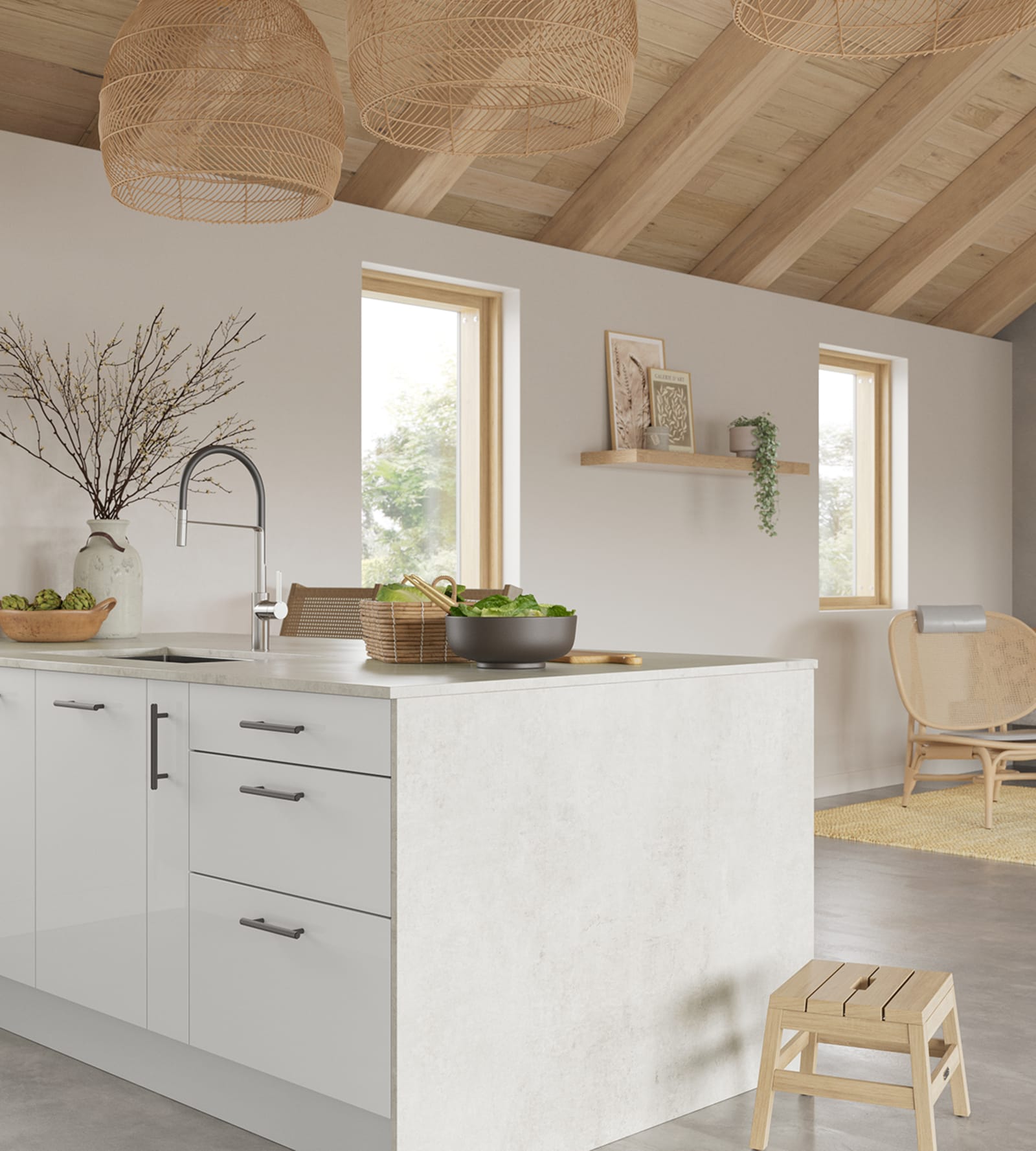
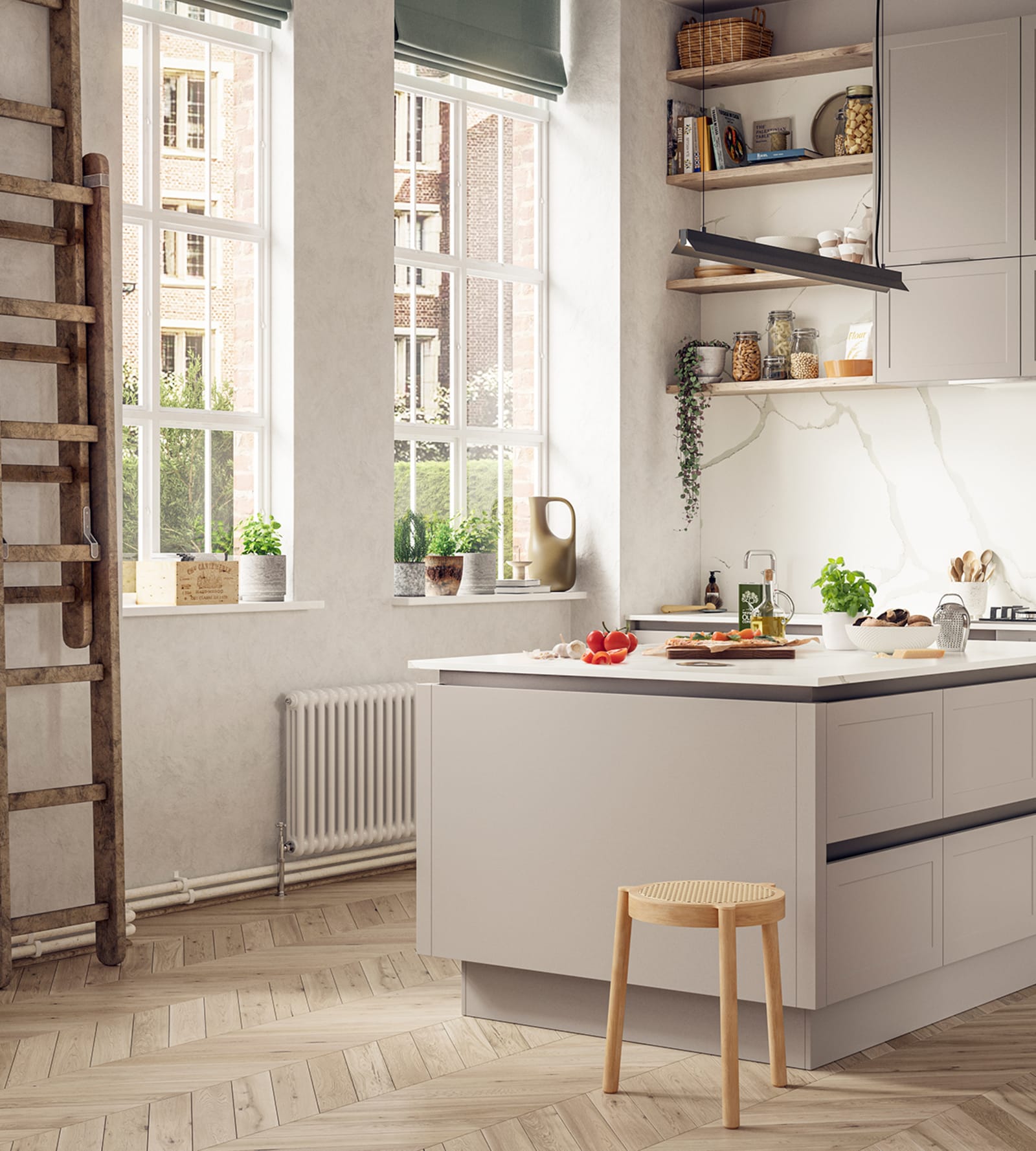
Carefully considered planting is another key characteristic of the Japandi style.
Borrowing principles from the biophilic design approach, bringing plants into the home creates a heathier, more balanced environment – improving air quality and overall wellness.
Potted planting can also be used to soften a minimalist interior by adding a sense of vibrancy and life.
Lighter woods such as pale oak and beech have previously been more typical to Scandinavian and Japanese interior styles. However, we have recently seen a return of darker, rich woods to interiors and they work beautifully within a Japandi environment.
As seen in our Nordic Nature kitchen range, the darker wooden cabinetry gives an on-trend, sophisticated look to a space – with a sense of durability and reliability.
Fluted cabinetry adds a tactile element while adding a sleek, linear design feature: both of which are key to the Japandi trend.

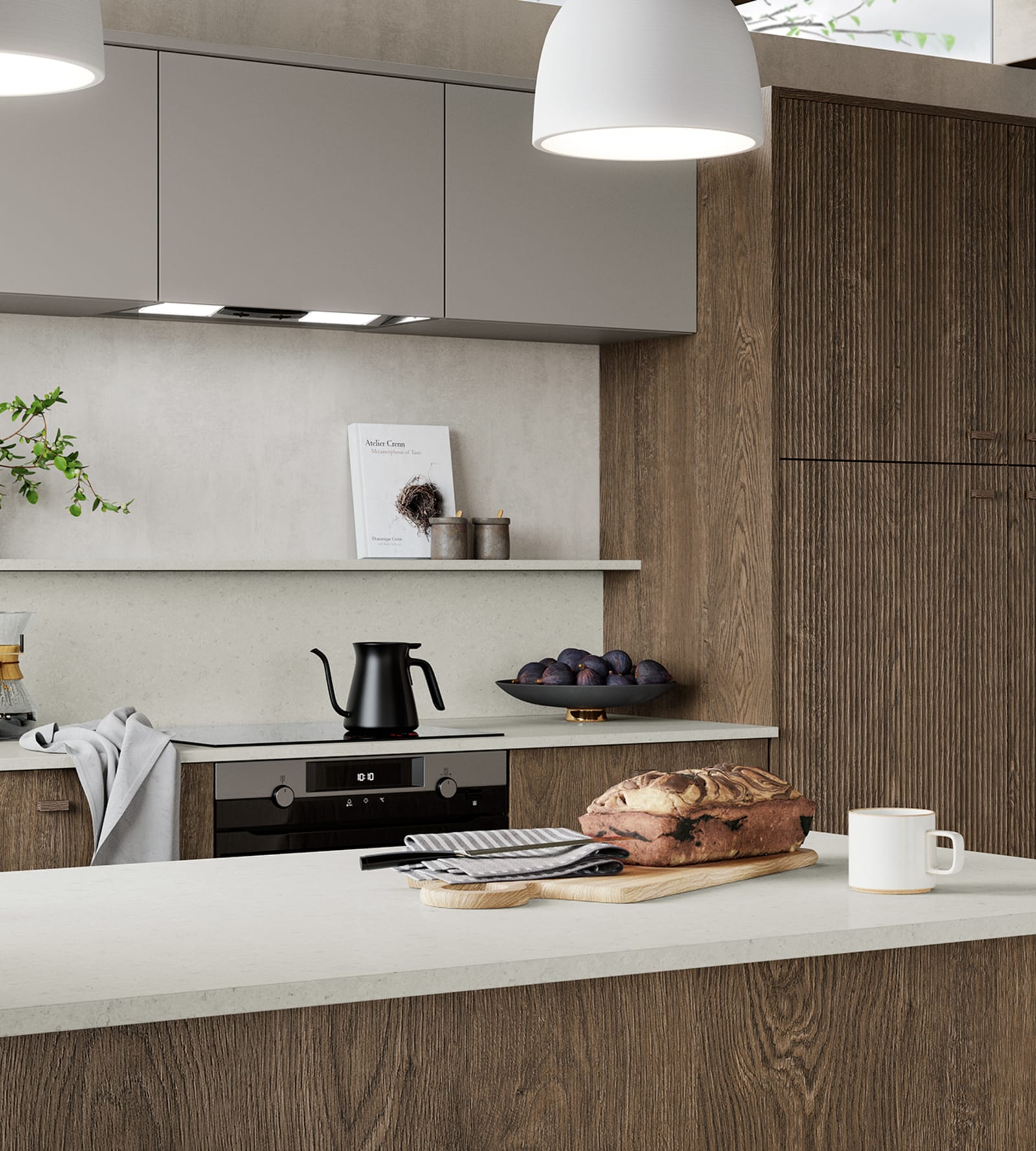
Our Nordic Nature cabinetry works wonders when used with warm, neutral décor choices and natural stone surfaces, and pairs beautifully with our Hoxton range in the soothing Pebble colour finish, giving a harmonious overall look.
This trend is all about choosing quality craftmanship, using materials that will stand the test of time, to create a timeless and functional kitchen that will be cherished for years to come.
If your dream is for a relaxing, tranquil space where form and function come together seamlessly, a Japandi kitchen design could be your perfect match.
Speak with one of our expert designers today to start creating your very own Japandi style kitchen.
Psst... Don't miss out!
Want front-row access to the latest design trends and seasonal offers? Subscribe to be first in the queue.
This site is protected by reCAPTCHA and the Google Privacy Policy and Terms of Service apply.
Thank you for signing up!
More from {{slotProps.categoryNames}}
Are you in the trade?
Sign up for a Magnet Trade account and get exclusive benefits & discounts
Which? Best Buy
Lifetime cabinet guarantee
Sign up for emails
Subscribe now for exclusive limited-time offers, exclusive updates and design trends.
Thank you for signing up!
This site is protected by reCAPTCHA and the Google Privacy Policy and Terms of Service apply.























